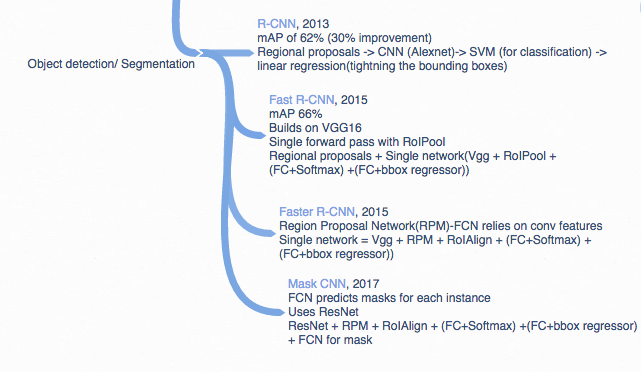Thought folks on this thread might enjoy reading this blog by Dhruv Parthasarathy about R-CNN, Fast-R-CNN, Faster-R-CNN and Mask-CNN
And here is my brief mind map after reading through the blog

Thought folks on this thread might enjoy reading this blog by Dhruv Parthasarathy about R-CNN, Fast-R-CNN, Faster-R-CNN and Mask-CNN
And here is my brief mind map after reading through the blog
